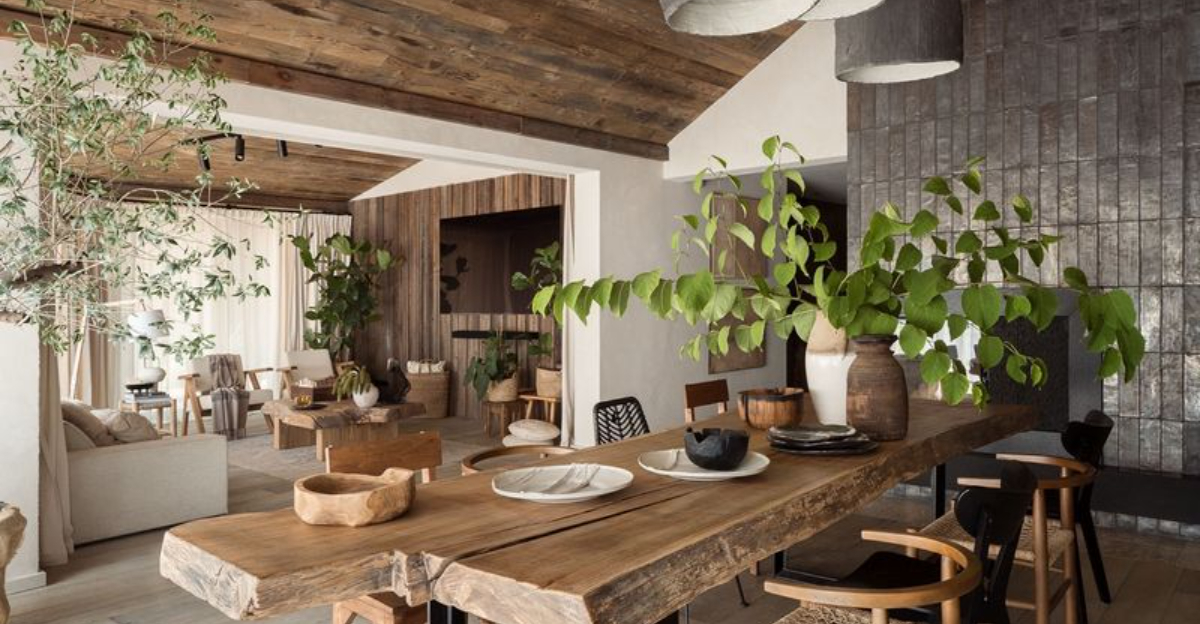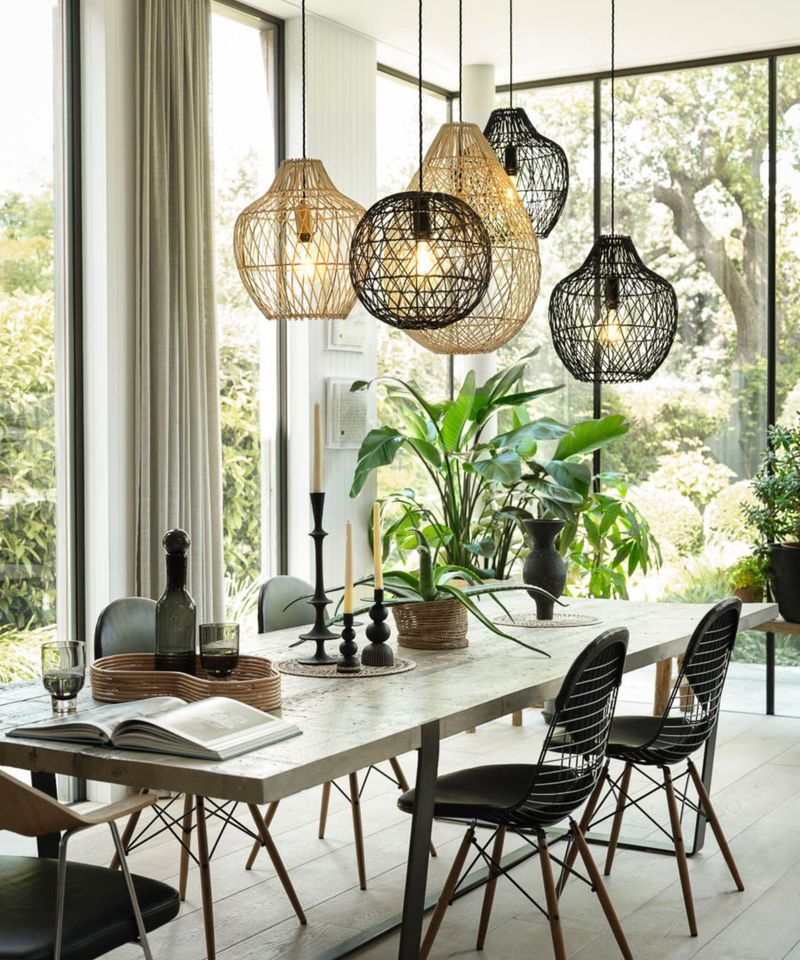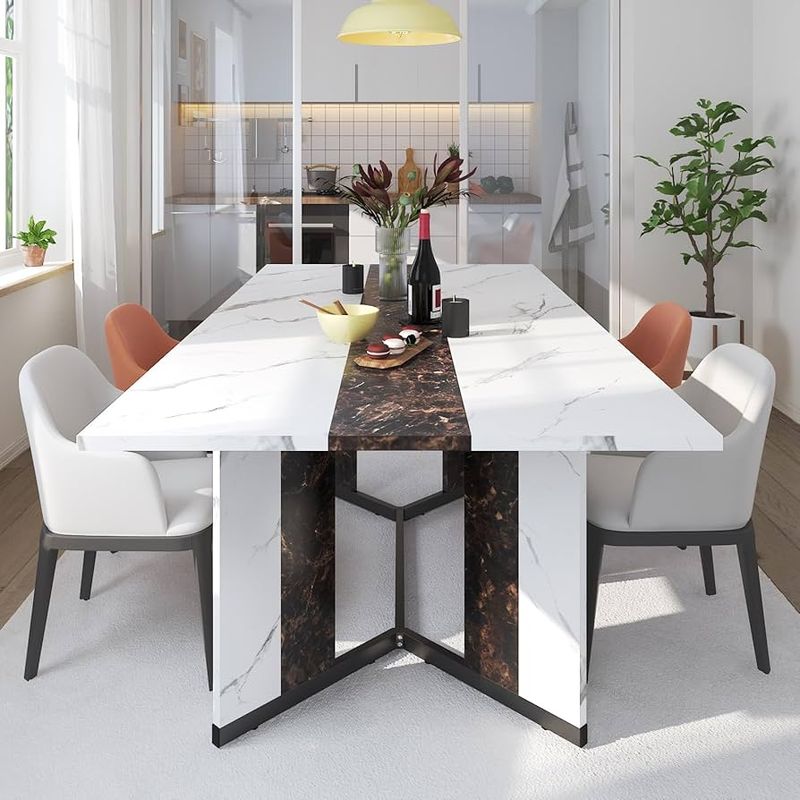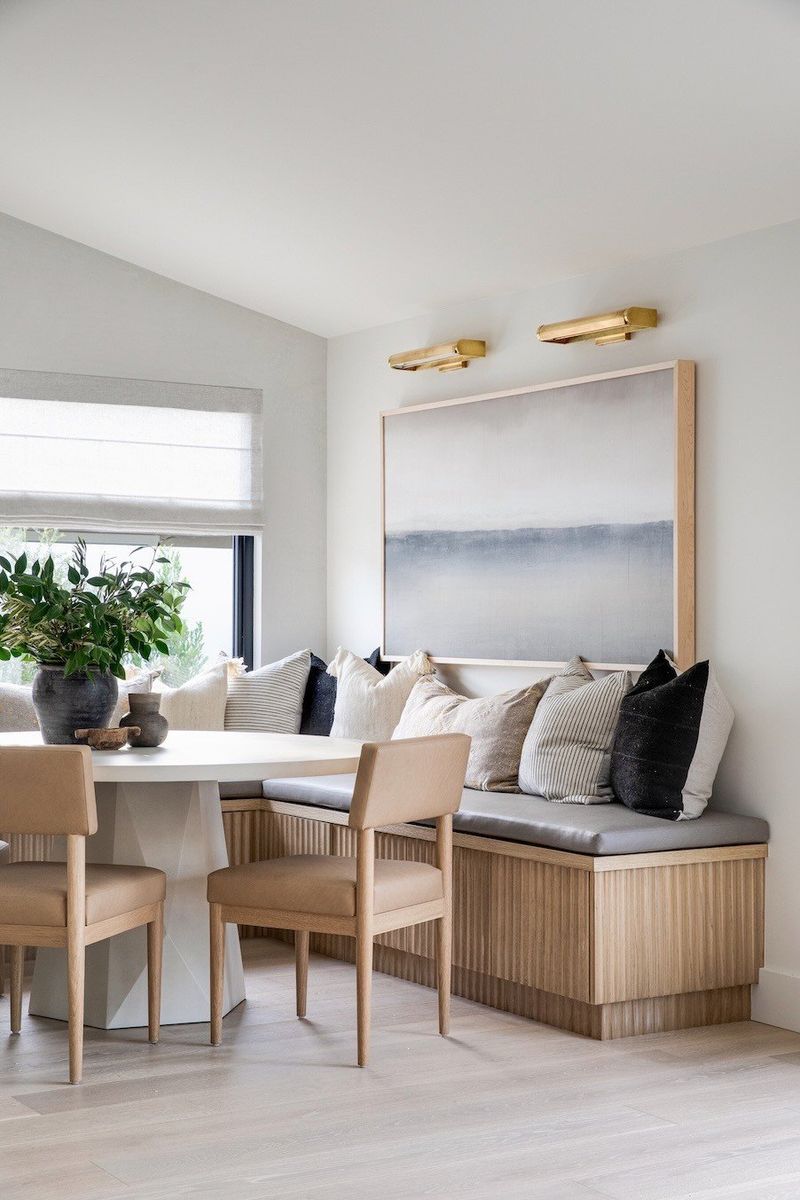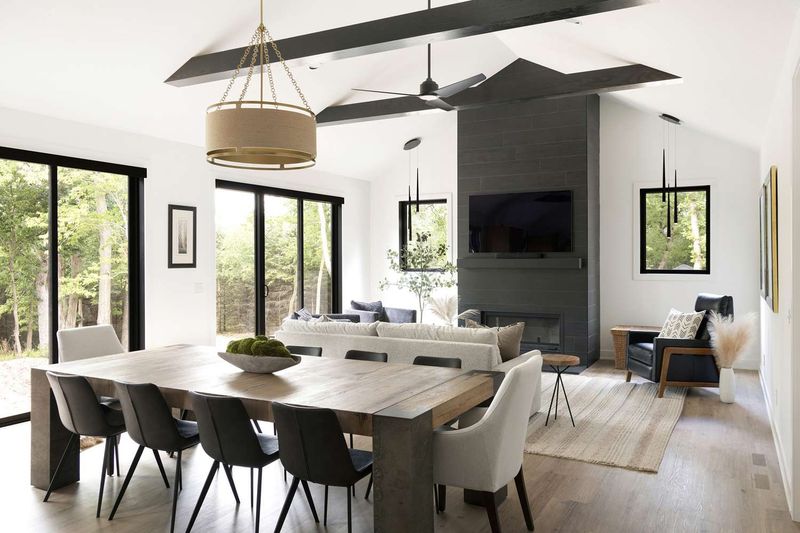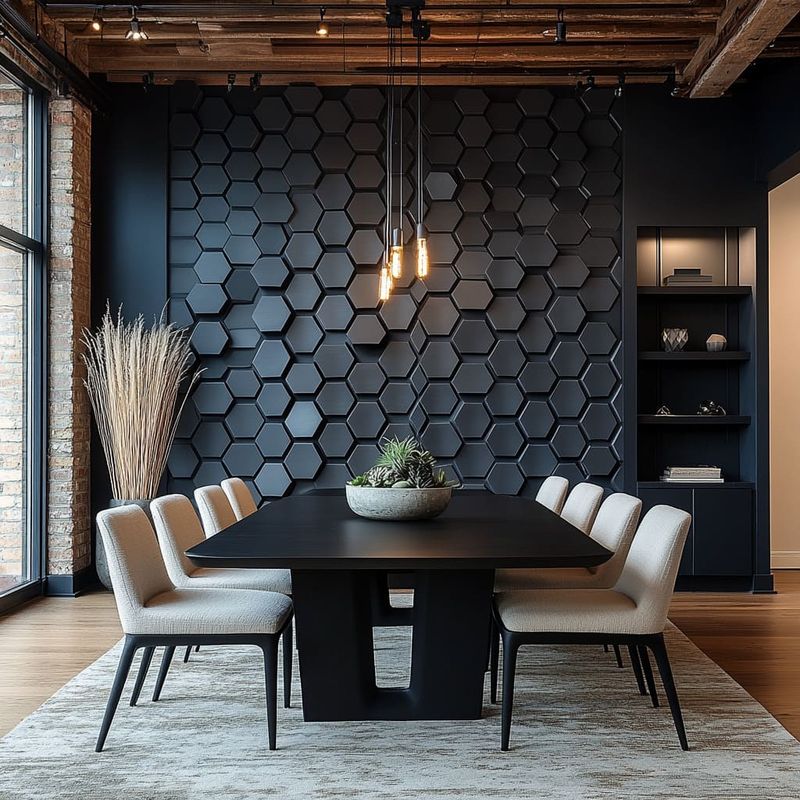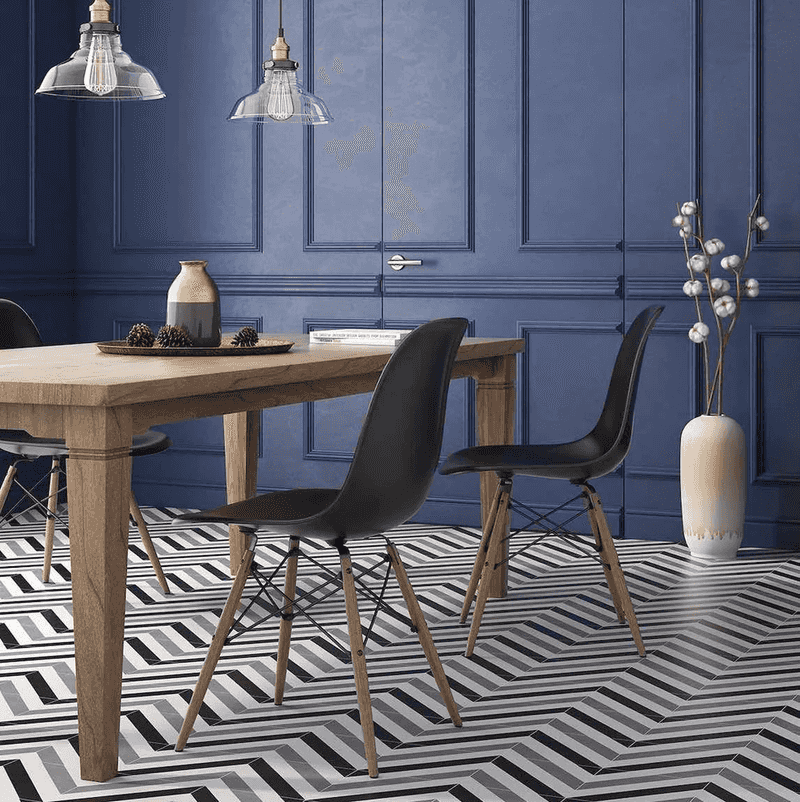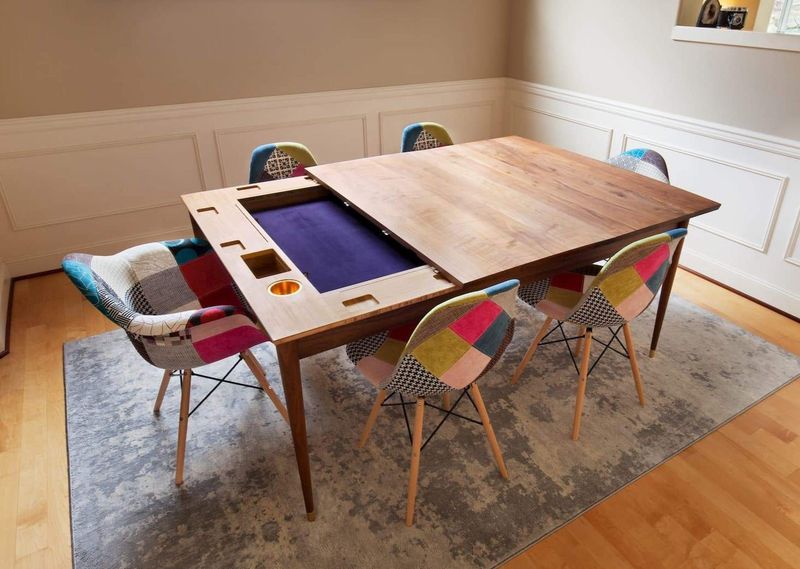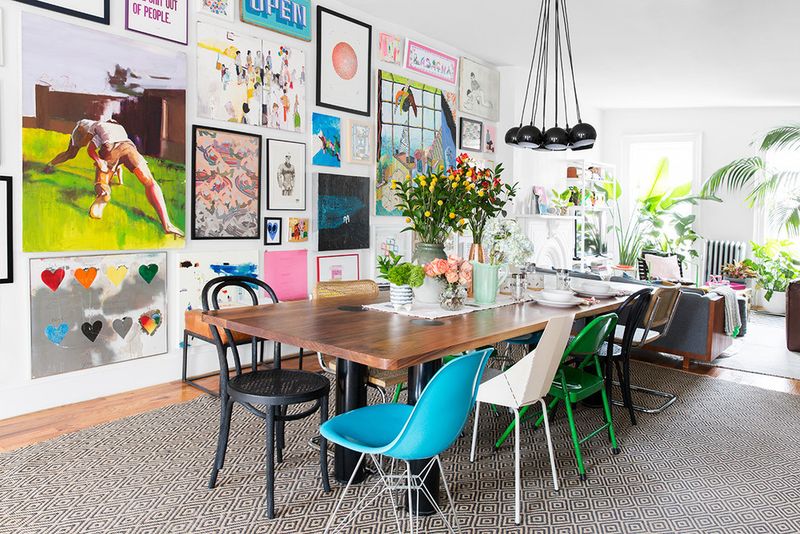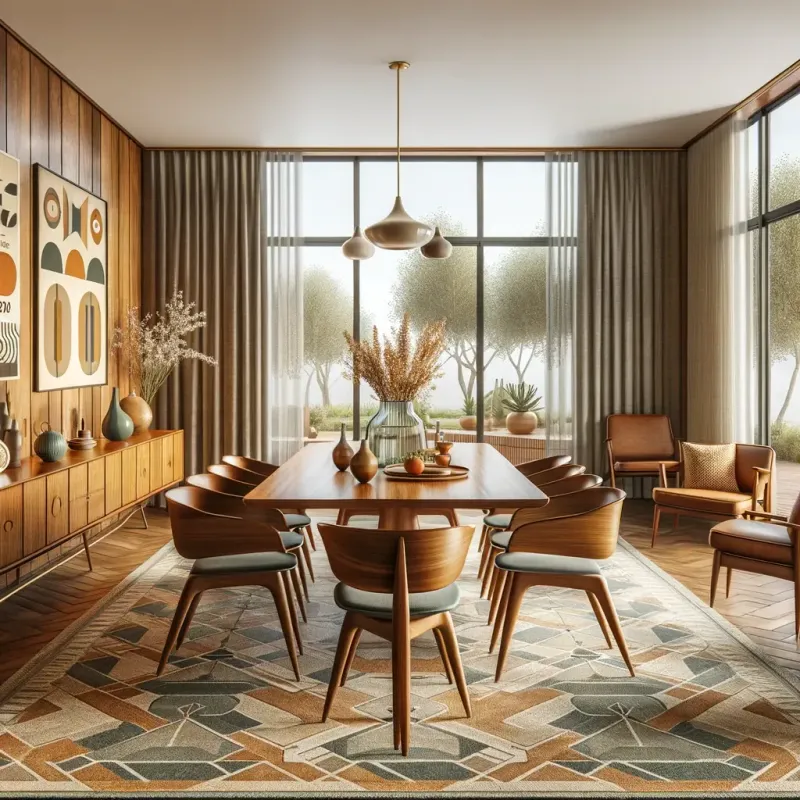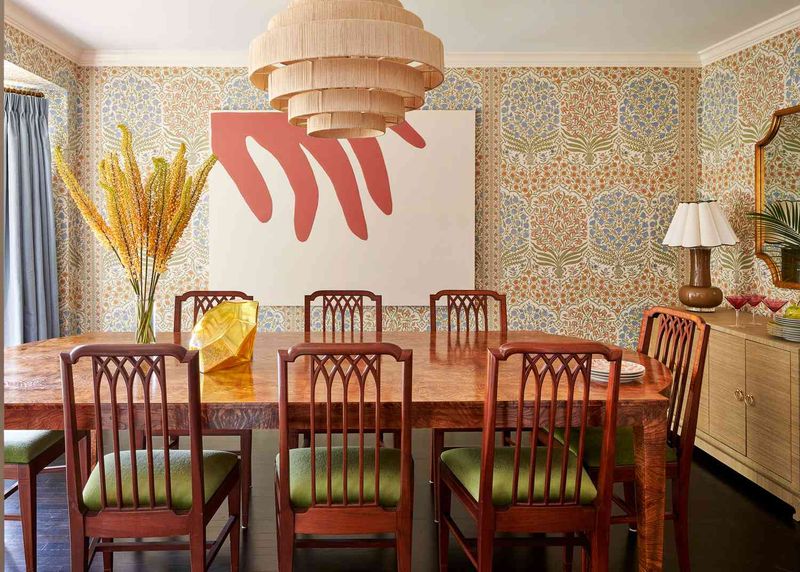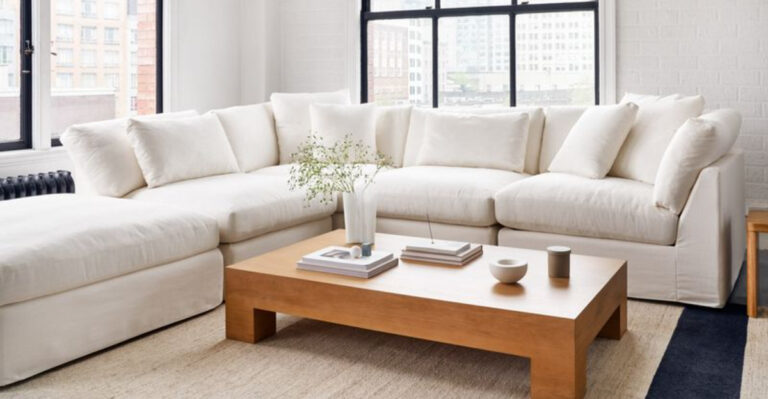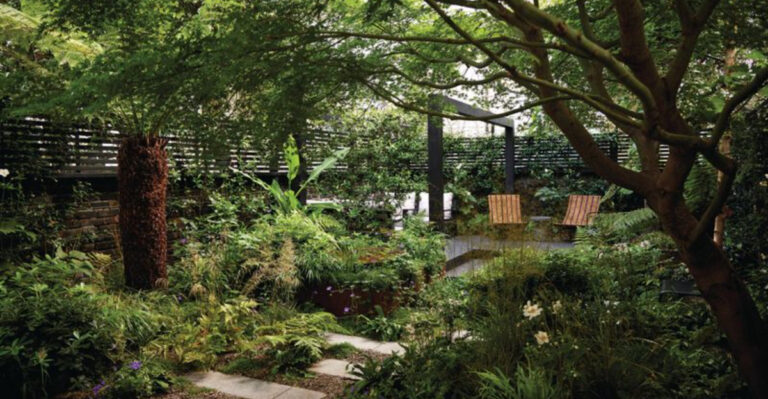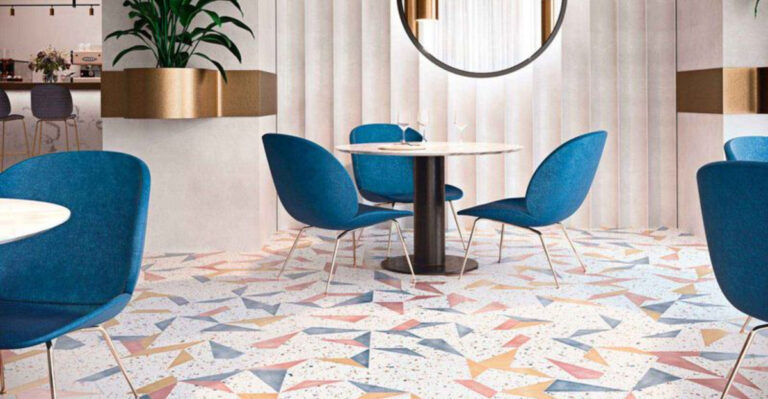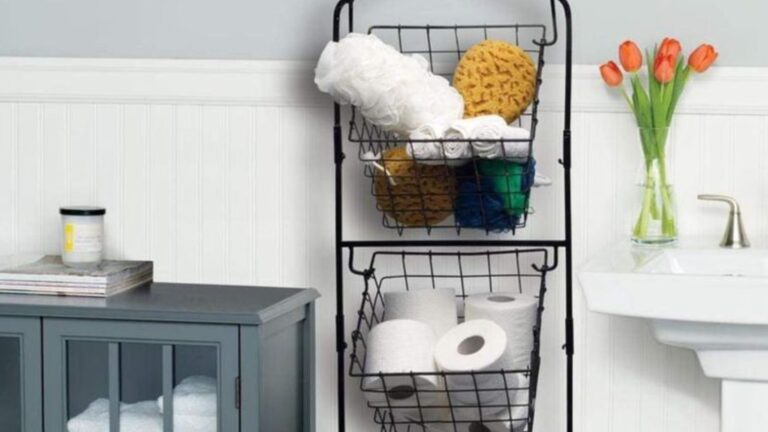10 Dining Room Trends For The Rest Of 2025 (Plus 5 That Everyone Is Starting To Already Obsess Over), According To Designers
The dining room is quietly becoming one of the most expressive spaces in the home – and designers are taking full advantage.
Forget stiff formal setups or predictable palettes. This year, it’s all about comfort, creativity, and a touch of bold personality. Think sculptural lighting, unexpected textures, and tables that invite people to linger.
I’ve rounded up 10 dining room trends designers are loving for the rest of 2025 – plus 5 rising favorites that are already stealing the spotlight. If your dining space needs a little glow-up, this is where the inspiration begins.
1. Curved Furniture Makes A Comeback
Gone are the days of sharp corners and rigid lines! Curved dining tables and rounded chairs are taking center stage in 2025, offering both visual interest and practical benefits. These softer silhouettes create a more inviting atmosphere while allowing better traffic flow around the table.
Many designers are pairing curved tables with plush, rounded chairs for a cohesive look that feels both modern and nostalgic. The gentle curves also promote better conversation by allowing guests to slightly face each other, making dinner parties more engaging.
2. Statement Lighting Clusters
Forget single pendant lights! Designers are now grouping multiple fixtures at varying heights to create dramatic visual impact above dining tables. These lighting clusters become functional art installations that transform the entire dining experience.
Materials range from handblown glass to woven natural fibers, often mixing textures for added interest. When dimmed for evening meals, these layered light sources create an intimate atmosphere with depth and dimension that flat lighting simply can’t achieve.
3. Biophilic Design Elements
Bringing the outdoors in has reached new heights in dining spaces. Natural materials, living walls, and large windows that frame garden views are becoming essential elements rather than afterthoughts.
Designers are incorporating sustainably sourced wood tables with live edges alongside stone accents that celebrate natural imperfections. Plants aren’t just decorative touches but integral design components that improve air quality and wellbeing.
4. Mixed Material Tables
Why choose just one material when you can have several? The hottest tables for 2025 combine wood with metal, stone, glass, or concrete for striking visual contrast.
These mixed-material pieces serve as conversation starters while offering practical benefits – marble insets resist heat damage while wood edges feel warm to the touch. Custom combinations allow homeowners to express their unique style while ensuring durability.
5. Built-In Banquette Seating
Custom banquettes are revolutionizing dining rooms by maximizing space while creating cozy, restaurant-like experiences at home. These built-in wonders can transform awkward corners or narrow spaces into the most sought-after seats in the house.
Smart designers are incorporating hidden storage beneath the cushions for table linens, seasonal decor, or rarely-used serving pieces. The continuous seating encourages lingering conversations and accommodates extra guests with ease.
6. Multifunctional Dining Spaces
As homes continue to work harder, dining rooms are no longer reserved just for eating. The latest designs seamlessly transition from morning workspace to homework central to elegant dinner party venue.
Sleek tables with integrated charging stations and hidden compartments for laptops maintain the room’s beauty while acknowledging modern needs. Adjustable lighting systems with programmable settings instantly change the mood from productive to romantic.
7. Textured Wall Treatments
Plain painted walls are giving way to tactile surfaces that add depth and character to dining spaces. Dimensional wood paneling, textured plaster finishes, and handcrafted tiles are creating sensory-rich backdrops for memorable meals.
Unlike flat paint, these textured surfaces play with light throughout the day, creating subtle shifts in atmosphere from morning coffee to evening dinner parties. They also improve acoustics, softening the clinking of glasses and animated conversations.
8. Statement Ceiling Treatments
Look up! The “fifth wall” is getting major attention with bold wallpaper, wooden beams, and even metallic paint transforming dining room ceilings into showstoppers. This unexpected focal point draws the eye upward, creating the illusion of height in the space.
Designers are using ceiling treatments to define the dining area in open floor plans without needing walls or room dividers. Architectural elements like coffers or medallions add historical character to new construction.
9. Bold Patterned Flooring
Neutral floors are stepping aside as graphic tiles, herringbone wood patterns, and painted designs make bold statements underfoot. These eye-catching foundations add personality while allowing furniture to remain relatively simple.
Unlike temporary decor that can be easily changed, statement flooring signals a confident design commitment that anchors the entire room.
10. Smart Dining Tables
Technology is being seamlessly integrated into dining furniture with tables featuring built-in heating elements, wireless charging pads, and customizable lighting. These smart features enhance the dining experience without sacrificing style.
Innovative designs include touch-controlled surfaces that can adjust height from coffee table to dining height, perfect for homes where space is at a premium. Some tables even include built-in speakers for music or conference calls when the space doubles as a work area.
1. Indoor-Outdoor Flow
The boundary between indoor dining spaces and outdoor areas is disappearing with full-wall sliding doors, matching flooring, and weather-resistant fabrics that work in both environments. This seamless transition effectively doubles the entertaining space during good weather.
Outdoor dining areas are being designed with the same attention to comfort and style as interior spaces. This connection to outdoor spaces brings natural light and fresh air into dining rooms, creating healthier, more uplifting environments for daily meals and special occasions.
2. Colorful Statement Chairs
Matching dining chairs? Not in 2025! Bold, mismatched seating in vibrant hues is breathing new life into dining rooms everywhere. Interior experts are pairing unexpected colors like emerald green, cobalt blue, and burnt orange around the same table for playful sophistication.
The chairs become the room’s focal point, allowing the rest of the space to remain relatively neutral. Many homeowners are opting to reupholster vintage finds in modern fabrics, creating sustainable statement pieces that combine classic craftsmanship with contemporary flair.
3. Vintage and Contemporary Fusion
The most sophisticated dining rooms of 2025 are rejecting the all-new or all-vintage approach in favor of thoughtful combinations that tell a personal story. Antique dining tables paired with modern chairs or vintage chandeliers hanging above sleek furniture create dynamic tension.
This mix-and-match approach allows cherished family pieces to coexist with contemporary designs, creating spaces that feel collected over time rather than purchased all at once. Designers recommend maintaining consistency in color palette or materials to unify disparate styles.
4. Dramatic Oversized Art
Small gallery walls are stepping aside for massive, conversation-starting art pieces that command attention in dining rooms. Single oversized paintings, photographs, or textile art create powerful focal points that set the tone for the entire space.
Many homeowners are commissioning pieces that reflect their personal stories or feature meaningful landscapes. The scale of these artworks transforms ordinary dining rooms into gallery-like experiences that stimulate conversation.
5. Sustainable and Handcrafted Pieces
Mass-produced furniture is losing ground to artisanal dining pieces with authentic stories and minimal environmental impact. Reclaimed wood tables, hand-thrown ceramic dinnerware, and lighting made from recycled materials are highly coveted status symbols.
Many are seeking out local craftspeople to create custom pieces that support community economies. These sustainable choices often become family heirlooms, designed to be passed down rather than discarded when trends change.

